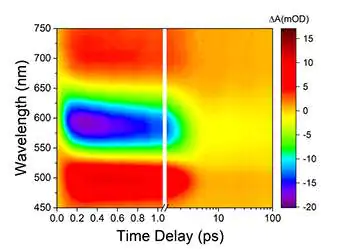
Time-Resolved Spectroscopy
Temporal Spectroscopy Techniques
Time-resolved FTIR spectroscopy (TRS) is commonly employed to observe the dynamics of single-instance chemical reactions using the Rapid-Scan method or recurring kinetics via the StepScan method. Each method offers unique advantages but also comes with certain constraints.
The StepScan method excels at capturing fleeting reproducible events, monitoring them down to the minuscule ns-range. The interferometer mirror methodically shifts to individual interferogram points, and with each shift, the experiment is re-initiated. This method can achieve a temporal resolution as precise as 2,5 nsec.
On the other hand, the Rapid-Scan technique is ideal for time-resolved studies of singular, non-repeatable experiments. Here, the interferometer mirror operates at high speed, enabling the extraction of up to 4 spectra from a singular complete interferometer scan. This allows for a data acquisition rate of up to 110 spectra every second.
For time-observed measurements of specific repeated experiments that require an impeccable signal-to-noise ratio, the interleaved TRS acquisition mode for the VERTEX series spectrometers is the method of choice. In this mode, the interferometer mirror maintains a consistent movement, and the experiment is triggered by the zero-crossings of the internal HeNe laser.
Areas of Application:
- Biological compound electron transfer observations
- Rapid gas-phase kinetic studies
- Geological interstitial species dynamics
- Radical intermediate state-to-state spectroscopy
- Combustion process dynamics
- Photolysis tests
- Pump and probe experiments
- Organometallic chemistry reaction kinetics
- Temporal emission spectroscopy like photoluminescence, fluorescence, or pulsed laser release